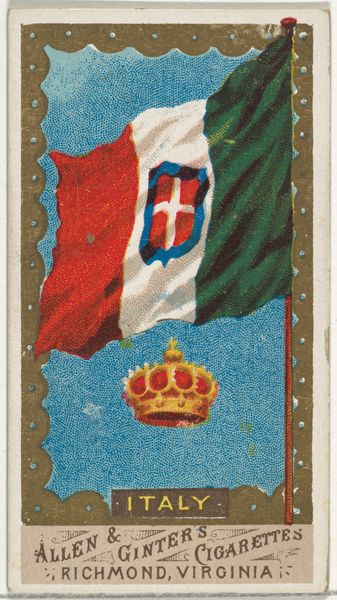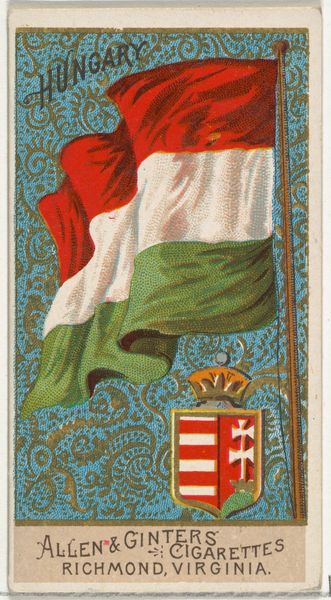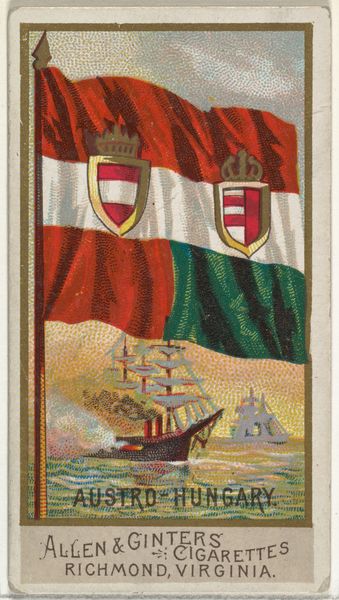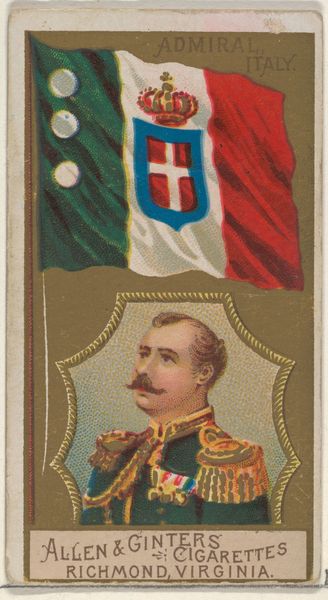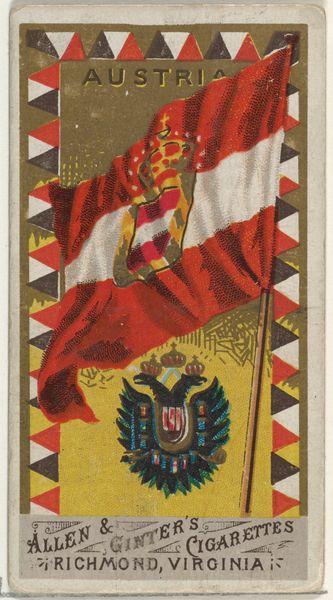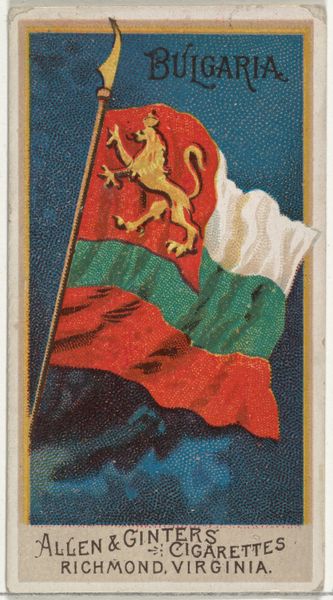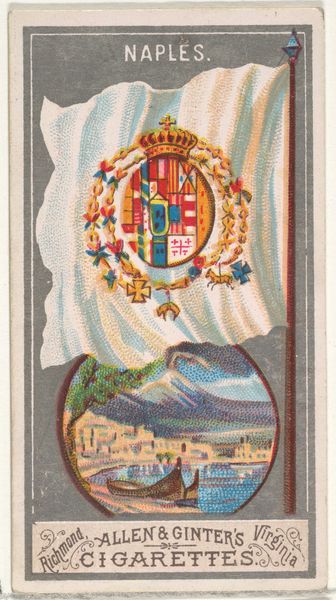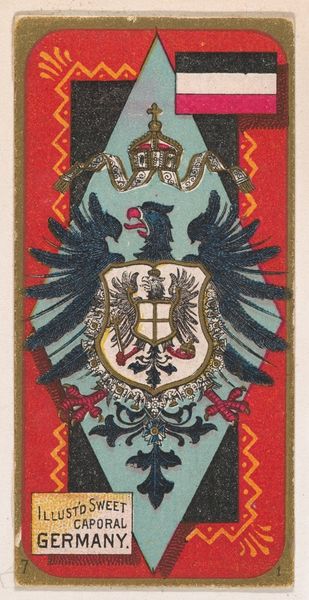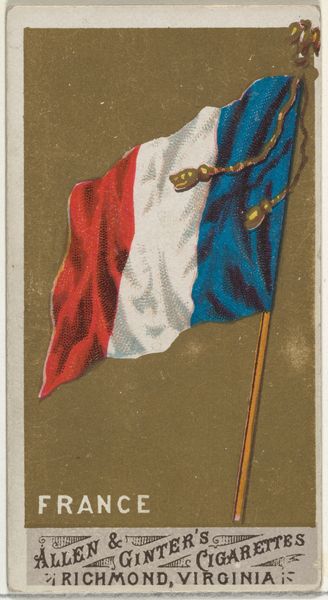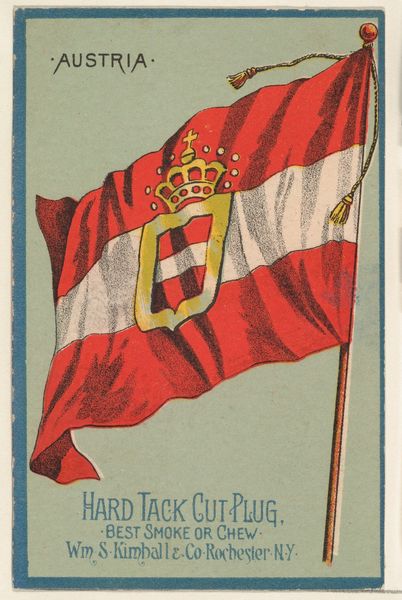
Italy, from Flags of All Nations, Series 1 (N9) for Allen & Ginter Cigarettes Brands 1887
0:00
0:00
drawing, graphic-art, print
#
drawing
#
graphic-art
# print
#
history-painting
#
academic-art
Dimensions: Sheet: 2 3/4 x 1 1/2 in. (7 x 3.8 cm)
Copyright: Public Domain
Curator: This vibrant little card, dating from 1887, is entitled "Italy, from Flags of All Nations, Series 1 (N9) for Allen & Ginter Cigarettes Brands." Editor: It’s strikingly graphic. My first impression is that the chromatic quality, a juxtaposition between regality and manufactured pleasure, feels deliberately conflicting. Curator: Absolutely. These cards were printed as collectibles inserted into cigarette packs. Think about that material reality: a delicate, meticulously designed piece of graphic art created solely to market mass-produced tobacco. The image becomes intrinsically tied to consumer culture and its evolving relationship to nationhood. Editor: Let’s unpack the production then. Cigarette cards were cheaply mass produced using chromolithography. In comparison to individual artworks, the printing techniques here enable quick, almost limitless reproductions for distribution across a range of consumers, disrupting traditional models of consumption by embedding collectability with everyday goods. Curator: Precisely, and look at the Italian flag juxtaposed with the crown. It begs the question, what idea of "Italy" is being sold here? Is it a celebration of a unified nation, or simply an exotic branding element used to peddle cigarettes in the American market? Think about the layers: an American company appropriating another nation's symbol. Editor: That symbol too: a vibrant crest over the striking national tricolour with a luminous crown hovering centrally against the backdrop, it appears at once authoritative and celebratory but cheapened with gaudy coloration and commercial deployment. Curator: It really is. It highlights the tension inherent in late 19th-century cultural exchange, especially the complex relationship between nations and consumerism. The act of collecting these cards then becomes part of the social fabric: the rituals, the trade networks, and shared experiences shaped by a burgeoning advertising industry. Editor: It’s amazing how much one small printed card can reveal about social structures, the hierarchies between production and high art, not to mention shifting economies of scale! Curator: Indeed. It serves as a reminder that objects, no matter how trivial they seem, can become powerful transmitters of identity, culture, and political ideology.
Comments
No comments
Be the first to comment and join the conversation on the ultimate creative platform.
